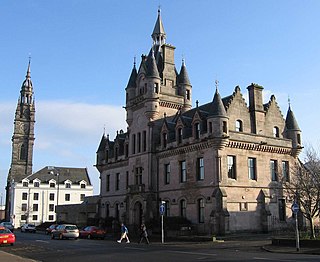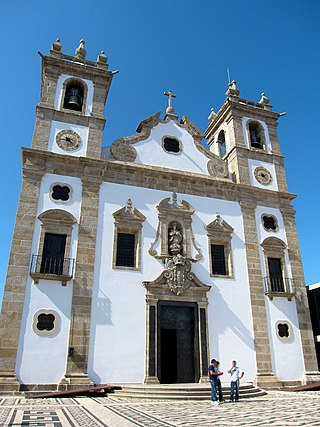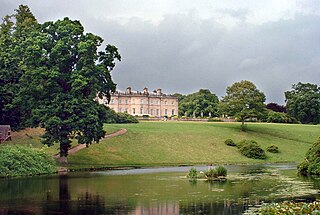This article needs additional citations for verification .(June 2012) |
| |||
|---|---|---|---|
| Buildings and structures +... |
The year 1748 in architecture involved some significant events.
Contents


This article needs additional citations for verification .(June 2012) |
| |||
|---|---|---|---|
| Buildings and structures +... |
The year 1748 in architecture involved some significant events.



Robert Adam was a British neoclassical architect, interior designer and furniture designer. He was the son of William Adam (1689–1748), Scotland's foremost architect of the time, and trained under him. With his older brother John, Robert took on the family business, which included lucrative work for the Board of Ordnance, after William's death.

Inveraray is a town in Argyll and Bute, Scotland. It is on the western shore of Loch Fyne, near its head, and on the A83 road. It is a former royal burgh, the traditional county town of Argyll, and ancestral seat to the Duke of Argyll.

Inveraray Castle is a country house near Inveraray in the county of Argyll, in western Scotland, on the shore of Loch Fyne, Scotland's longest sea loch. It is one of the earliest examples of Gothic Revival architecture.
The year 1757 in architecture involved some significant events.
The year 1763 in architecture involved some significant architectural events and new buildings.
The year 1774 in architecture involved some significant events.
The year 1769 in architecture involved some significant events.

William Adam was a Scottish architect, mason, and entrepreneur. He was the foremost architect of his time in Scotland, designing and building numerous country houses and public buildings, and often acting as contractor as well as architect. Among his best known works are Hopetoun House near Edinburgh, and Duff House in Banff. His individual, exuberant style built on the Palladian style, but with Baroque details inspired by Vanbrugh and Continental architecture.

Scottish baronial or Scots baronial is an architectural style of 19th-century Gothic Revival which revived the forms and ornaments of historical architecture of Scotland in the Late Middle Ages and the Early Modern Period. Reminiscent of Scottish castles, buildings in the Scots baronial style are characterised by elaborate rooflines embellished with conical roofs, tourelles, and battlements with machicolations, often with an asymmetric plan. Popular during the fashion for Romanticism and the Picturesque, Scots baronial architecture was equivalent to the Jacobethan Revival of 19th-century England, and likewise revived the Late Gothic appearance of the fortified domestic architecture of the elites in the Late Middle Ages and the architecture of the Jacobean era.
John Adam was a Scottish architect, building contractor and supervisor.

The Galli–Bibiena family, or Galli da Bibiena, was a family of Italian artists of the 17th and 18th centuries, including:
The year 1776 in architecture involved some significant events.
The year 1760 in architecture involved some significant events.
The year 1717 in architecture involved some significant events.
The year 1755 in architecture involved some significant events.

The architecture of Póvoa de Varzim, in Portugal, demonstrates a broad variety of architectural styles over its thousand years of history. 11th-century Romanesque, 16th-century Mannerism, 18th-century Baroque, late 18th-century neoclassicism, early 20th-century Portuguese modernism and late 20th- to early 21st-century contemporary architectural styles and more are all represented in Póvoa de Varzim. As a whole it represents a rich eclectic tradition and innovation shaped by the people, their beliefs and economy.
The year 1731 in architecture involved some significant events.

Estate houses in Scotland or Scottish country houses, are large houses usually on landed estates in Scotland. They were built from the sixteenth century, after defensive castles began to be replaced by more comfortable residences for royalty, nobility and local lairds. The origins of Scottish estate houses are in aristocratic emulation of the extensive building and rebuilding of royal residences, beginning with Linlithgow, under the influence of Renaissance architecture. In the 1560s the unique Scottish style of the Scots baronial emerged, which combined features from medieval castles, tower houses, and peel towers with Renaissance plans, in houses designed primarily for residence rather than defence.
Events from the year 1748 in Scotland.